HR Compliance 101

HR Compliance 101
Companies of all sizes face increasing HR complexities as the number of employment laws and regulations are on the rise, and the risk of penalties for non-compliance has never been greater. When developing HR policies and procedures, HR leaders should know, for example, that:
- An employer must follow employment laws, including applicable federal, state, and local regulations.
- A business may be subject to an audit from an enforcing agency that may levy fines and penalties for non-compliance.
- Not knowing or understanding your compliance obligations is not an acceptable legal defense.
What is HR’s role in compliance?
One of the key roles of HR departments is bridging the gap between the company’s strategic growth and objectives — and compliance practices that influence activities such as hiring, employee development, and retention.
Understanding the company’s strategic priorities lays the foundation for a better understanding of how compliance concerns may impact decisions. HR goals should be designed to support company strategy, yet they must also consider compliance implications.
What are some examples of HR compliance issues?
HR related compliance centers around employee-related matters, including when and how to pay overtime, employee documentation that must be maintained, administering benefits, hiring procedures and separation policies. Some examples of issues you might face include the following:
Recruiting Strategies
If your goal is to increase diversity within your organization, what compliance factors come into play when reaching out to potential candidates? How does managing costs for benefits and compensation amid the federal, state, and local laws that regulate these areas impact what path your company will follow?
Form I-9
Form I-9 is used to verify both the identity of new employees and their authorization to work in the United States. Make sure you are up to date on the following items:
- Document storage requirements
- How to complete a Form I-9 and deadlines for completion, based on employee’s hire date
- Understand that you cannot mandate what specific documents a new hire presents (they’re permitted to present any allowable document(s) listed on the form)
- The impact of errors; if any part of the form is completed incorrectly, fines can be costly
You must ensure that Forms I-9 are completed in a timely manner and in compliance with the regulations and guidance provided, and that they are properly retained on file.
With immigration issues at the forefront of enforcement, complying with the most recent standards and requirements for employment verification should be on top of an HR leader’s compliance checklist.
Non-discriminatory hiring
Federal anti-discrimination laws enforced by the Equal Employment Opportunity Commission (EEOC) include the Americans with Disabilities Act (ADA), the Age Discrimination in Employment Act (ADEA), the Genetic Information Nondiscrimination Act (GINA), and Title VII of the Civil Rights Act of 1964, all of which prohibit discrimination in employment based on protected classes. It’s important to ensure a workplace free of discrimination in compliance with applicable federal, state, and local laws.
When it comes to compliance with these laws, employers should ask themselves:
- Do I know which federal, state, and local employment laws prohibiting discrimination in recruitment and hiring apply to my business? Antibullying and/or sexual harassment prevention?
- Have my managers been trained on these laws recently? Annually?
- Do I have policies in place to communicate our efforts to comply with these laws? Policy sign-offs?
- Have I analyzed company practices for making employment decisions including recruitment, hiring, promotion, and access to training? Metrics?
Exempt vs. non-exempt status
Fair Labor Standards Act (FLSA) regulations regarding employee classifications for exempt versus non-exempt status are often confused with the designation of hourly versus salaried employee payment methods.
The U.S. Department of Labor (DOL) aims to ensure employees are paid in compliance with the federal wage and hour law. Under the law, employees are classified as either exempt or non-exempt from some or all of the provisions of the FLSA. Non-exempt employees must be paid at least minimum wage for all hours worked up to 40 in a workweek and the applicable overtime rate for hours worked over 40 in a workweek.
Pay issues
Does your regular rate of pay include wages, commissions, shift or job differential, premium pay for hazardous work, non-discretionary bonuses, and other incentive payments? Include them in your calculations for overtime where applicable and avoid shortcuts, such as averaging hours over multiple workweeks.
Off-the-clock work
Employees must record all hours worked, including work performed outside of regular working hours or off work premises even if the work was not authorized or requested. It’s your responsibility to make sure time cards are correct.
However, employers should avoid adjusting the weekly salary of an exempt employee due to the quantity of hours worked. Such action could jeopardize the salary basis test and the individual’s exempt status.
Travel time
Traveling from home to work and back doesn’t generally count as paid travel time, but travel from one job site to another will likely be compensable and count as time worked for non-exempt employees.
For home-based workers, traveling to the office may be considered compensable and time worked. Other types of travel may also be considered compensable under federal and state wage and hour regulations.
Maintaining Employee Records
Each employer has its own unique employment record maintenance practices. Employee records can be maintained in paper form, scanned or completed and maintained electronically. No matter what format is used, the maintenance, security and retention requirements are the same.
Employers must have at least three different employment record files on each employee. The main personnel file that contains employee performance and job-related information; the medical/confidential file that contains protected, non-job-related or confidential medical information; and the payroll file that contains payroll, garnishment and other pay-related information. I-9 files, Background Check reports including Credit Checks, and Workers’ Comp paperwork should always be maintained separately. Employers must give special consideration to where and how they maintain these files, limiting access to those with a need-to-know only and protecting applicants and employees from discrimination, identity theft, breach of privacy, and HIPAA violations
Effective ways to keep up with compliance issues
Ensuring compliance in HR can be a tall order, but here are two pointers to get you started:
- Conduct an internal human resource audit of strengths and weaknesses of existing compliance levels. If unsure about where to begin, seek a subject matter expert’s advice or research requirements on the enforcing government agency’s website.
- Ensure that anyone accountable for compliance in the organization is properly trained. Remember, supervisors and managers represent the business in day-to-day employment decisions.
Once you gain a thorough understanding of your current practices and identify any gaps that may lead to compliance issues, you can begin to set priorities and draw up a plan to strengthen your processes.
An HR compliance checklist for businesses
Ultimately, it is critical that today’s HR leaders balance HR strategy and compliance. By instilling an overarching strategy that lays out your company’s goals and objectives – and ties that to compliance planning — employers can make more informed decisions that may minimize risk and keep compliance as an achievable goal.
Many organizations find it useful to develop a checklist that functions as a reminder for areas that they must keep in mind at all times. Some key areas to monitor and ensure compliance at all times include:
- Completion and compliant retention of Form I-9
- Ensuring non-discriminatory hiring practices
- Accurate classification of exempt vs. non-exempt employees
When compliance is part of the decision-making process, it’s immediately highlighted on how different outcomes could impact business performance. Find out more at www.jkexec.com



